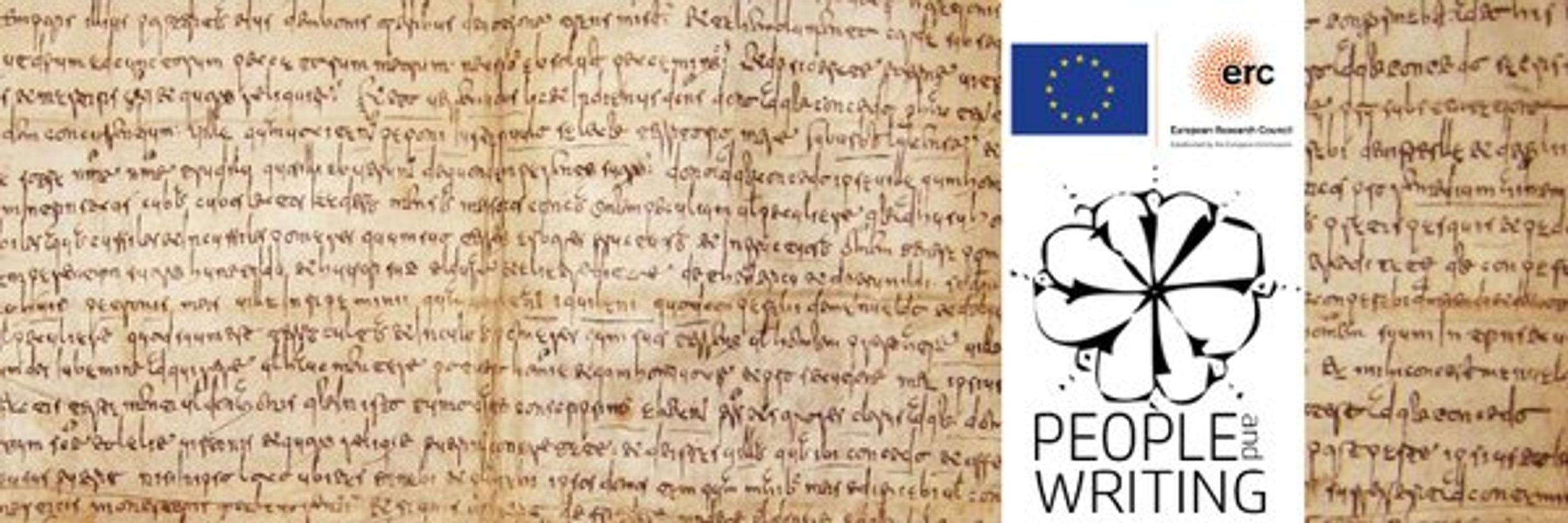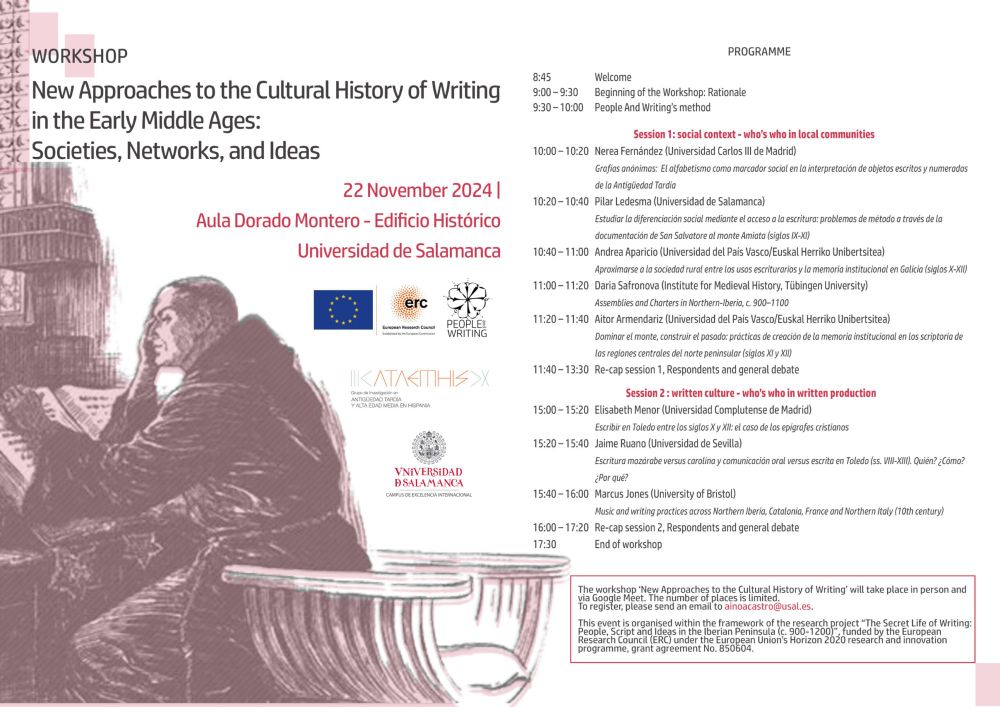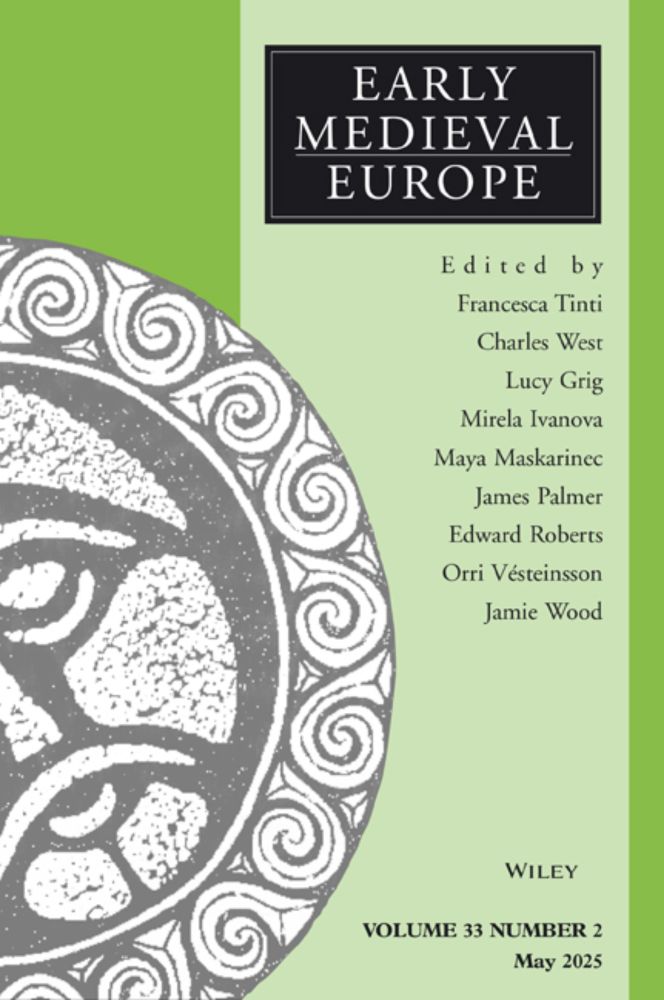
PI ERC funded project #PeopleAndWriting
Universidad de Salamanca
peopleandwriting.usal.es/es/carolingi...
peopleandwriting.usal.es/es/carolingi...
23-24 June
7 Owengate, Durham
FREE (please note that you will need to provide your own materials - click the link for a list of what you'll need.)
Find out more and book your place: www.durham.ac.uk/research/ins...

23-24 June
7 Owengate, Durham
FREE (please note that you will need to provide your own materials - click the link for a list of what you'll need.)
Find out more and book your place: www.durham.ac.uk/research/ins...
No problem – I’ll just stitch on another one to match!
#Materiality #MssStudies

No problem – I’ll just stitch on another one to match!
#Materiality #MssStudies
Discover how anonymous scripts can still speak volumes in this thought-provoking guest post by @nereavsk.bsky.social on People and Writing.
🔍 #Palaeography #MedievalStudies #Manuscripts
👉 peopleandwriting.usal.es/en/guest-pos...

Discover how anonymous scripts can still speak volumes in this thought-provoking guest post by @nereavsk.bsky.social on People and Writing.
🔍 #Palaeography #MedievalStudies #Manuscripts
👉 peopleandwriting.usal.es/en/guest-pos...
@artefr.bsky.social
www.youtube.com/watch?v=njcS...

@artefr.bsky.social
www.youtube.com/watch?v=njcS...
Read more & find a link to the @dias-isos.bsky.social digital copy here: www.ria.ie/collections/...

Read more & find a link to the @dias-isos.bsky.social digital copy here: www.ria.ie/collections/...

It’s a doorway to many centuries of Latin palaeography!
#medievalsky
#manuscripts



📆 July 11 2025, University of Leeds
▶️ Info and registration: tinyurl.com/yeyhact4
#medievalsky

📆 July 11 2025, University of Leeds
▶️ Info and registration: tinyurl.com/yeyhact4
#medievalsky

Reseña del libro de Graham Barrett, Text and Textuality in Early Medieval Iberia (711–1031), imprescindible para quienes estudian cultura escrita en la Alta Edad Media
🆓 👉 revistas.usal.es/uno/index.ph...
#ManuscriptStudies #PeopleAndWriting @erc.europa.eu
Reseña del libro de Graham Barrett, Text and Textuality in Early Medieval Iberia (711–1031), imprescindible para quienes estudian cultura escrita en la Alta Edad Media
🆓 👉 revistas.usal.es/uno/index.ph...
#ManuscriptStudies #PeopleAndWriting @erc.europa.eu

Pilar Ledesma explores how labour, writing, and orality intertwine in medieval contexts. A must-read!
👉 peopleandwriting.usal.es/en/guest-pos...

Pilar Ledesma explores how labour, writing, and orality intertwine in medieval contexts. A must-read!
👉 peopleandwriting.usal.es/en/guest-pos...




#Vatican Barb.lat.541 f.2v
#MedievalSky

#Vatican Barb.lat.541 f.2v
#MedievalSky

Join our Introduction to Medieval Spanish Palaeography course!
Uncover the secrets of script from 800–1500 🕵️♀️📜
⏳ Deadline to register is fast approaching – don’t miss out!
🔗 ies.sas.ac.uk/events/intro...

Join our Introduction to Medieval Spanish Palaeography course!
Uncover the secrets of script from 800–1500 🕵️♀️📜
⏳ Deadline to register is fast approaching – don’t miss out!
🔗 ies.sas.ac.uk/events/intro...


El #CSIC coordina el nodo español de E-RIHS, que aplicará un enfoque innovador en la conservación de los bienes culturales
➡️ https://tinyurl.com/3hvb2nym



El #CSIC coordina el nodo español de E-RIHS, que aplicará un enfoque innovador en la conservación de los bienes culturales
➡️ https://tinyurl.com/3hvb2nym


